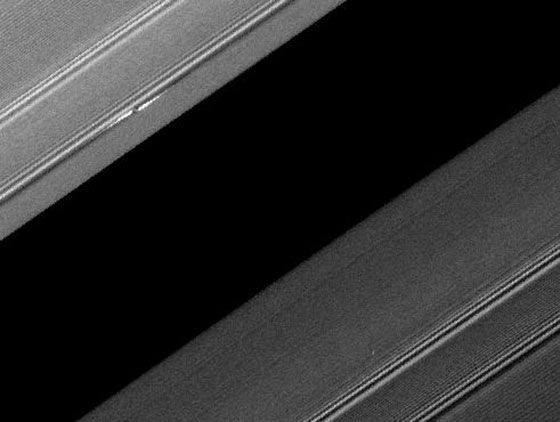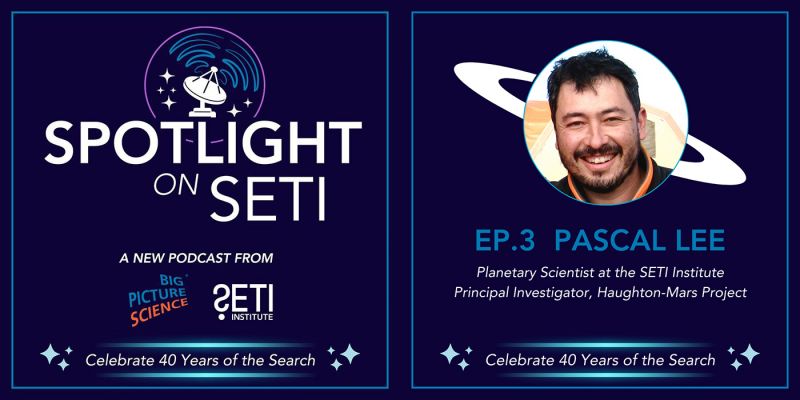Matt Tiscareno joins the Cassini team for Cassini's Grand Finale.

SETI Institute researcher Matt Tiscareno will continue to be on the front lines as the famed Cassini spacecraft embarks on its final mission. NASA has announced that Tiscareno will be a Participating Scientist as Cassini prepares to take the best images of Saturn’s rings ever made.
Since 2011, the Cassini Project has selected Participating Scientists to enhance the scientific return of the Cassini mission by broadening the community of researchers taking part in the analysis and interpretation of data. Tiscareno began working with the Cassini mission as a postdoc in 2004, and was first selected as a Participating Scientist in 2012. He is one of four such researchers selected this year by NASA.
 Already among the most successful spacecraft missions in history – one whose discoveries have ranged from the geysers of Enceladus to the storms of Saturn, the seas of Titan, and enigmatic features in the rings – Cassini will spend its last year performing a “Grand Finale.” It will repeatedly dive close to the rings and the planet for nearly a year, before finally plunging into Saturn in September 2017.
Already among the most successful spacecraft missions in history – one whose discoveries have ranged from the geysers of Enceladus to the storms of Saturn, the seas of Titan, and enigmatic features in the rings – Cassini will spend its last year performing a “Grand Finale.” It will repeatedly dive close to the rings and the planet for nearly a year, before finally plunging into Saturn in September 2017.
In addition to close-range measurements of Saturn’s gravity and magnetic fields (both of which yield insights into the gas giant’s interior structure), Cassini will directly sample the atmosphere and measure the mass of the rings. It will also make repeated passes very close to the rings – at distances only a few times the diameter of Earth. In such close proximity, Cassini can garner images with two to three times better resolution than those obtained during the main part of the mission.
“The only other time we have been this near to the rings was at the very beginning of the mission, when the spacecraft maneuvered close to the planet while putting itself into orbit,” says Tiscareno. “But this time we will be coming down from above the rings, rather than scooting laterally across them, and we’ll be doing it again and again. So we’ll have both enough time and a sufficiently stable vantage point to make a really top-notch portrait of the ring system.”
In addition to a full-length scan of the main rings, Cassini will use some of its closest vantage points as opportunities to make detailed pictures of locations within the rings that have been flagged over the past decade as being of special interest. Tiscareno will be working on these images also. Some of these images will be of “propellers,” disturbances in the ring created by football field-sized moonlets as they orbit Saturn, embedded in the ring. Cassini scientists, including Tiscareno, have been tracking the orbits of nearly a dozen propellers over the past decade, and the changes in their orbits may indicate that the moons are directly interacting with the disk in ways that could shed light on the way baby planets interact with their surrounding natal disks. The up-close propeller images taken during Cassini’s Grand Finale should provide new details of what that interaction looks like.
“I am exceedingly honored to have been chosen to work with the Cassini Project in this capacity,” said Tiscareno, “and I am very excited to see what will be revealed as Cassini saves its best for last.”

A propeller-shaped structure created by an unseen moon is brightly illuminated on the sunlit side of Saturn's rings in this image obtained by NASA's Cassini spacecraft.NASA/JPL/Space Science Institute
Saturn's Rings: An Accessible Astrophysical Disk
Saturn's ring system is an astrophysical disk that is neither light-years away nor billions of years in the past. We can visit this disk at close range and observe a number of phenomena that also operate in disks of other kinds. As a result, we see small-scale processes that shape ring texture, connect those processes to the bodies and structures that cause them, and watch closely as the disk changes with time.
We will discuss recent Cassini observations that elucidate disk processes including 1) "self-gravity wakes" and "spiral density waves," both of which were originally proposed for galaxies but are observed with exquisite precision in Saturn's rings, 2) "propeller" features caused by 100-meter to km-sized moonlets embedded in the disk; these are the first objects ever to have their orbits tracked while embedded in a disk, rather than orbiting in free space, and hold the potential of deepening our understanding of planetary migration, and 3) irregular edge shapes in the gaps opened up by larger moons (10 km and more), which may hold clues to angular momentum transport.





